PCO Technology Information Database
Our products employ a proprietary enhancement to the established photocatalytic oxidation (PCO) technology developed more than 20 years ago. This advanced product: Active Photodynamic Oxidation Technology is the foundation of our instruments currently being used to disinfect indoor air and surfaces. PCO has been proven to kill many bacteria, viruses, volatile organic compounds (VOCs), molds, fungus and odors wherever they reside. This is in contrast to some air only purification systems dependent upon air flow passing through the unit or through filters. PCO technology has been proven both safe and effective in laboratory and industrial testing. PCO technology similar to that used in our products has been licensed for use in medical, food, military, residential, commercial, marine and hospital applications. They have been approved or registered by UL, ETL, FCC, TUV, CE and CSA. PCO is used by NASA on the International Space Station. The following is a summary of some of the peer reviewed testing and studies performed by third party independent labs and universities.
Bacteria
Methicillin-resistant Staphylococcus aureus (MRSA) – Easily transmitted in a hospital environment and resistant to most staphylococcus antibiotics including oxacillin, penicillin, amoxicillin and methicillin, MRSA has only a few expensive treatment options and there are challenging side effects. From
1999 to 2005 the estimated number of MRSA related hospitalizations more than doubled, from 127,036 to 278,203 causing a national priority for disease control. In 2010 encouraging results from the Center for Disease Control indicates a 28% decrease in invasive (life threatening) MRSA infections in a hospital setting. Estimated cost of MRSA treatment in 2005 was $3.2 billion to $4.2 billion nationwide.
Effectiveness of Photocatalytic Oxidation Technology: ~ 99.9% reduction in viability of MRSA was observed within 80 minutes of photocatalytic treatment.
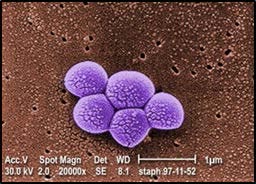

Staphylococcus aureus – S. aureus can cause a range of illnesses, from minor skin infections such as pimples, impetigo, boils (furuncles), cellulitis folliculitis, carbuncles, scalded skin syndrome and abscesses to life-threatening diseases such as pneumonia, meningitis, osteomyelitis, endocarditis, toxic shock syndrome (TSS), bacteremia and sepsis. The systems it affects range from skin, soft tissue, respiratory, bone, joint, endovascular to wound infections. It is still one of the five most common causes of nosocomial infections and is often the cause of postsurgical wound infections. Each year, some 500,000 patients in American hospitals contract a staphylococcal infection.
Effectiveness of Photocatalytic Oxidation Technology: ~ 99.9% reduction in viability of Staphylococcus aureus was observed within 80 minutes of photocatalytic treatment.
Clostridium difficile (C. diff) – C. diff is a bacterium that can cause symptoms ranging from diarrhea to life- threatening inflammation of the colon. C. diff most commonly affects older adults in hospitals or long term care facilities. In recent years, C. diff infections have become more frequent, more severe and more difficult to treat. While MRSA infection rates are decreasing in response to stepped-up prevention efforts within hospitals, infections caused by C. diff have increased each year since 2007. [Mayo Clinic Staff, 2010]
Effectiveness of Photocatalytic Oxidation Technology: ~ 99.9% reduction in viability of C. diff within 80 minutes of photocatalytic treatment. Complete surface inactivation was
demonstrated and bacterial re-growth following photocatalytic treatment was not observed.
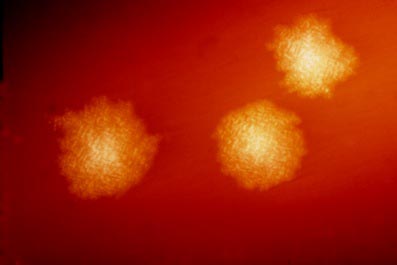
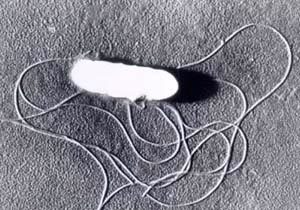
Listeria monocytogenes – Listeriosis is a serious infection usually caused by consuming food contaminated with Listeria monocytogenes and causes significant public health risks responsible for approximately 1,600 cases annually. Prior to 2011, the largest outbreak
occurred in 2002, when 54 illnesses, 8 deaths, and 3 fetal deaths in 9 states were associated with consumption of contaminated turkey deli meat. The 2011 outbreak, caused by tainted
cantaloupe, infected a total of 139 persons with any of the four outbreak-associated strains of Listeria monocytogenes. The outbreak spread over 28 states and resulted in 29 deaths.
Effectiveness of Photocatalytic Oxidation Technology: Testing on stainless steel surfaces using PCO resulted in ~ 99% microbial reductions.
Escherichia coli – E. coli consists of a large and diverse group of bacteria. Although most strains are harmless, other strains of E. coli can cause illnesses such as diarrhea, urinary tract infections, respiratory illness and pneumonia. In most cases of disease causing outbreaks, shiga toxins produced by E. coli are responsible. Recent multistate foodborne outbreaks include: Lebanon Bologna 2011, Hazelnuts 2011, Shredded Romaine Lettuce 2010, and Beef 2010, resulting in massive product recalls.
Effectiveness of Photocatalytic Oxidation Technology: Antibacterial activity of Ag doped TiO2 showed ~ 99% deactivation of E. coli. The doped TiO2 showed enhanced efficacy as opposed to the non-doped.
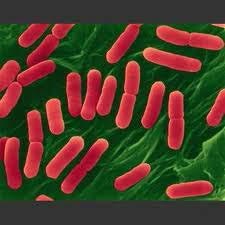
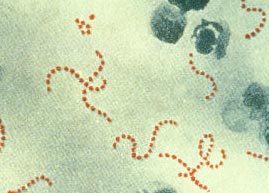
Group A Streptococci (GAS) – GAS is a bacterium often found in the throat and on the skin. People may carry Group A Streptococci and have no symptoms of illness. Most GAS infections are relatively mild illnesses such as “strep throat,” or impetigo. Occasionally these bacteria can cause severe and even life-threatening diseases when bacteria get into parts of the body where they are not usually found, such as the blood, muscle, or the lungs. These infections are termed “invasive GAS disease”. About 9,000-11,500 cases of invasive GAS disease occur each year in the United States, resulting in 1,000-1,800 deaths annually.
Effectiveness of Photocatalytic Oxidation Technology: Testing on stainless steel surfaces using PCO resulted in ~ 96% microbial reductions.
Pseudomonas aeruginosa – P. aeruginosa is an increasingly prevalent opportunistic human pathogen and the most common gram negative bacterium in nosocomial infections. P. aeruginosa
is responsible for 16% of nosocomial pneumonia cases, 12% of nosocomial urinary tract infections, 8% of surgical wound infections, and 10% of bloodstream infections.
Effectiveness of Photocatalytic Oxidation Technology: Testing on stainless steel surfaces using PCO resulted in ~ 99% microbial reductions.
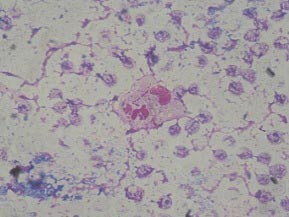
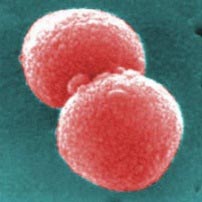
Streptococcus pneumonia – S. pneumonia typically enter the lung when airborne droplets are inhaled, but can enter through the bloodstream when there is an infection in another part of the body. There were 50,774 deaths in the US in 2009 attributed to pneumonia. It is estimated that up to 2.3% of all nursing home patients have pneumonia at any given time.
Effectiveness of Photocatalytic Oxidation Technology: Testing on stainless steel surfaces using PCO resulted in ~ 99% microbial reductions.
Bacillus anthracis – Anthrax is an acute disease caused by Bacillus anthracis. Most forms of the disease are lethal and it affects both humans and other animals. Anthrax spores can be produced in vitro and used as a
biological weapon. Anthrax is spread by spores of B. anthracis. These spores can be transported by clothing or shoes. The body of an animal that had active Anthrax at the time of death can be a
source of Anthrax spores. A lethal infection is reported to result from inhalation of about 10,000 – 20,000 spores, though this dose varies among host species. Testing at the University of Cincinnati by Dr. Grinshpun used Bacillus subtilis as a surrogate.
Effectiveness of Photocatalytic Oxidation Technology: Deactivation of > 90% of microorganisms was achieved in less than 60 minutes, the majority of which occurred within 10 minutes.
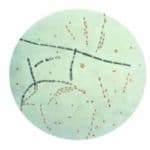
Viruses
Norwalk Virus –This virus is a Norovirus. Noroviridae are a group of related single stranded RNA, highly contagious viruses and the most common cause of acute gastroenteritis in the
United States. Known by other names such as stomach flu and food poisoning, it is responsible for 50% of food-borne outbreaks of gastroenteritis. Noroviruses spread from person to person by direct contact, touching contaminated surfaces, and contaminated food and water supplies.
Effectiveness of Photocatalytic Oxidation Technology: Deactivation of > 90% of Murine Norovirus (MNV)
microorganisms was achieved after 4 hours.
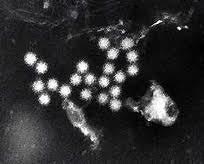
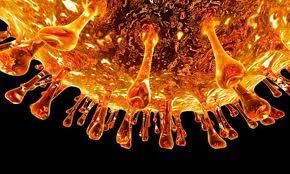
H1N1 Virus (Swine Influenza) – The H1N1 virus is a unique strain of influenza. The Centers for Disease Control determined that the strain contained genes from four different flu viruses – North American swine influenza, North American avian influenza, human influenza and swine influenza viruses typically found in Asia and Europe. The virus spreads from person to person by droplets from coughing and sneezing and by touching a person contaminated with the virus, then touching one’s eyes, nose or mouth.
Effectiveness of Photocatalytic Oxidation Technology: Testing on stainless steel surfaces using PCO resulted in ~ 99% microbial reductions.
H5N1 Virus Avian Influenza (Bird Flu) – H5N1 has evolved into a flu virus strain that infects more species than any previously known strain, is deadlier than any previously known strain, and continues to evolve, becoming both more widespread and more deadly. Epidemiologists are afraid the next time such a virus mutates, it could pass from human to human. Direct transmission of avian viruses to humans is possible. Testing of photocatalysis on H5N1 was completed at Kansas State University using H5N8 as a surrogate.
Effectiveness of Photocatalytic Oxidation Technology: Testing on stainless steel surfaces using PCO resulted in ~ 99% microbial reductions.
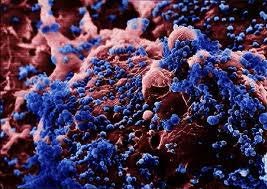
Fungus, Molds, & Spores
Stachybotrys chartarum – S. chartarum is a black mold that produces its conidia in slime heads and is found in soil and grain as well as cellulose rich building materials and damp or water-damaged buildings. It requires high moisture content in order to grow and is associated with wet gypsum material and wallpaper. Health problems related to this mold have been documented in humans and animals since the 1930s
and more recently has been linked with “sick building syndrome.”
Effectiveness of Photocatalytic Oxidation Technology: Testing on stainless steel surfaces using PCO
resulted in ~ 99% microbial reductions within 24 hours.
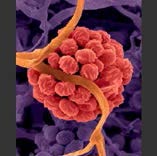

Candida albicans – C. albicans is a diploid fungus that grows as both yeast and filamentous cells and a causal agent of opportunistic oral and genital infections in humans. Systemic fungal infections (fungemias) including those by C. albicans have emerged as important causes of morbidity and mortality in immune-compromised patients (e.g., AIDS, cancer chemotherapy, organ or bone marrow transplantation). C. albicans biofilms may form on the surface of implantable medical devices. In addition, nosocomial infections by C. albicans have become a cause of major health concerns.
Effectiveness of Photocatalytic Oxidation Technology: Testing on stainless steel surfaces using PCO resulted in ~ 99% microbial reductions within 24 hours.
Other Studies
Volatile Organic Compounds (VOCs) – There have been studies showing the effectiveness of PCO on over 60 VOCs. A partial list includes formaldehyde and chloroform (found outgassing from common household materials), Acetone, isopropyl alcohol, ethanol, methyl ethyl ketone, propene, toluene, methylene chloride (frequently found in common chemical cleaners) vinyl acetate and xylene (found outgassing from common plastic products). Airborne tobacco smoke has also been shown to be a major cause of irritations and has caused other major health issues as well.
Effectiveness of Photocatalytic Oxidation Technology: Testing has shown reductions of > 90% in most cases.
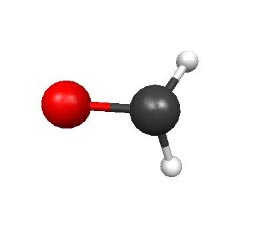
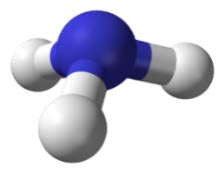
Odors – Photocatalytic oxidation of odor compounds including acetaldehyde, isobutyric acid, toluene, hydrogen sulfide and trimethylamine at about 500 ppm were reduced by over 90%. The data suggest that photocatalysis should be considered for reduction of certain odor compounds.
Inorganic Compounds – A few inorganic gas-phase compounds include ammonia (NH3), hydrogen sulfide (H2S), nitrogen oxides (NOx), N2O), ozone (O3) and sulfur oxides (SOx). Those compounds containing hydrogen, carbon and oxygen under conditions of complete oxidation form water and carbon dioxide.
Effectiveness of Photocatalytic Oxidation Technology: Testing has shown reductions of > 90% in the compounds tested.
Allergens – Allergens are numerous and varied things such as dust mites excretions, pollen and pet dander. Basidiospores are considered a major source of airborne fungal allergens, which may include mushrooms, rusts, smuts, and brackets. A study in New Zealand has shown that 22% of patients with respiratory allergic disorders tested positive for basidiospores allergies. Heavy rainfall increases fungal spore releases which are listed as a major source of airborne allergens.
Effectiveness of Photocatalytic Oxidation Technology: Testing has shown reductions > 95% in most cases of airborne allergens including mold spores, basidiospores, dust mite excretions, tobacco smoke and protein molecules (animal allergens).

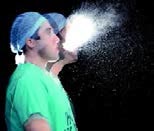
Sneeze test – PCO
Many microbials are transmitted in the air from one animal or human to another. It has been reported that tests were run at a simulated sneeze test lab using a sneeze simulation machine which showed a 78% reduction of microbials within 3 feet.
Safety
Photocatalysis, a natural chemical process, is the acceleration of a photoreaction in the presence of a catalyst. These PCO materials can then break down organic molecules, like air pollutants and smog precursors, into environmentally friendly compounds. Using PCO has become more attractive than filtration or UV treatment because it is a non-invasive, non-toxic, and cost effective method to address a wide variety of technologies related to purification and degradation processes. These pollutants are converted into non-toxic compounds, such as carbon dioxide and water vapor.
An emerging alternative method for air pollution control employs the use of semiconductors in photocatalytic oxidation (PCO) of organic contaminant to produce innocuous CO2 and H2O. Among the photocatalysts used, titanium dioxide (TiO2) is the most widely implemented because it is inexpensive, nonhazardous, and chemically inert.
Engineered PCO devices for intentional air ionization are more controllable than incidental sources. These units produce controlled outputs of specific ions on demand. The formation of undesirable byproducts, such as ozone, is minimized. In multifloor buildings, no new VOCs were identified as products of incomplete ionization at levels of detection. The number of air exchanges may be significantly reduced resulting considerable in energy savings.
Green Technology – Energy Star Compliant
Our products are committed to the environment by using low voltage technology to power our devices, designing our products with durability, refurbishment and reuse in mind, and packaging with recycled materials. Preference is shown to suppliers that share these values.
Breaking the Chain of Infection
PCO technology has been developed for use in hospitals and healthcare facilities to assist in their efforts to enhance the safety of the “environment of care” as defined by The Joint Commission (www.jointcommission.org). Its report, “Infection Prevention and Control Issues in the Environment of Care, 2nd edition (2009),” specifically addresses the impact of nosocomial (originating in the health care environment) infections and their spread, using the Center for Disease Control’s “chain of infection” model. This chain is composed of five links:
- pathogen
- reservoir (where pathogen lives and grows)
- portal of exit
- mode of transmission
- portal of entry and susceptible host, or uninfected person.
Breaking a single link in this chain stops the spread of infection. The PCO technology actively breaks it at two points: both the disease-causing pathogen and the reservoir where it thrives.
Transferring this technology from the clinical setting to residential and commercial settings is—such as the technology itself—“a natural.” For as the EPA states:
“The quality of indoor air inside offices, schools, and other workplaces is important not only for workers’ comfort but also for their health. Poor indoor air quality (IAQ) has been tied to symptoms like headaches, fatigue, trouble concentrating, and irritation of the eyes, nose, throat and lungs.”
Technology Close Up
Those requiring evidence-based proof before trusting a new technology will find it in our gas-phase air purification system.
The story begins in 1903 with scientist Niels Finsen. His research verified the naturally disruptive impact of 254 nm wavelength (ultraviolet or UV) light on RNA and DNA. It also won him the Nobel Prize for Medicine.
Now, fast-forward that Nature-based finding some 55 years. A researcher began exploring ways to maximize the RNA/DNA disruption effect of UV light while overcoming the major limitation—that of the requirement for very close contact between the light wave and the target (see “Target Talk” graph below). The successful system he discovered served as the catalyst for next-generation technology.
In fact, the technology serving as the foundation for our air purification products:
- generates a process called active photocatalytic oxidation (PCO)
- forms and releases large clusters of positively and negatively charged ions: Multi-Clustered Ions (MCIs)
- attacks microbes (bacteria, viruses, volatile organic compounds (VOCs), allergens, molds, and odors), wherever they exist in the indoor environment
- continues to treat the environment with MCIs on a 7X24 basis
- has been proven unequivocally by independent universities and laboratories on a global basis to be highly effective and safe
- is at work in many clinical, commercial, and residential buildings, as well as on the International Space Station.
PCO technology has further enhanced the microbial-killing effectiveness and efficiency of the root technology by more than 50%. Unlike other Indoor Air Quality (IAQ) Systems (i.e. HEPA filtration, Germicidal UV, UV Robots, Negative Ionizers, Ozonators), our PCO products destroy microbes in the air, on surfaces, and in crevices, on a continual basis, with a technology that is safe for humans and animals.
Target Talk: the limitations of UV only products
Niels Finsen’s research proved wavelength light can be used to disrupt RNA and DNA activity. The same studies, however, showed that the effectiveness degrades by the inverse square. Or, stated more simply, the farther the target DNA or RNA is from the light wave, the less it is affected.
Our gas-phase air purification systems eliminate the distance factor through its active air treatment technology. Air-borne microbials need not be within a few inches of the PCO air purifier to be destroyed.
In contrast, a single UX 105™ can treat all the air in an enclosed space up to 5000 square feet.
